July 11th 2017 will be a day to remember in the history of the Trust. On the previous evening, Peckett 0-6-0ST “Scaldwell” of 1913 had arrived on a Milner low-loader from Amberley Museum. By mid-afternoon, he (it?) was in the new building. However, that simple description hides a great deal of work and heartache. Since summer 2016, when two Trustees looked the loco over, swiftly followed by our project manager Stuart, we have been let down by various transport providers, even when we had succeeded in raising the funding required for the move. Other potential providers either backed out or quoted silly money (a good sign that they didn’t want the job!). Naturally, Scaldwell could not be moved when the museum was open – and the available days were fast running out when Duncan Milner’s well-respected firm from Stoke-on-Trent managed to fit the move in, on the very last available day before the summer season would have stopped it all.
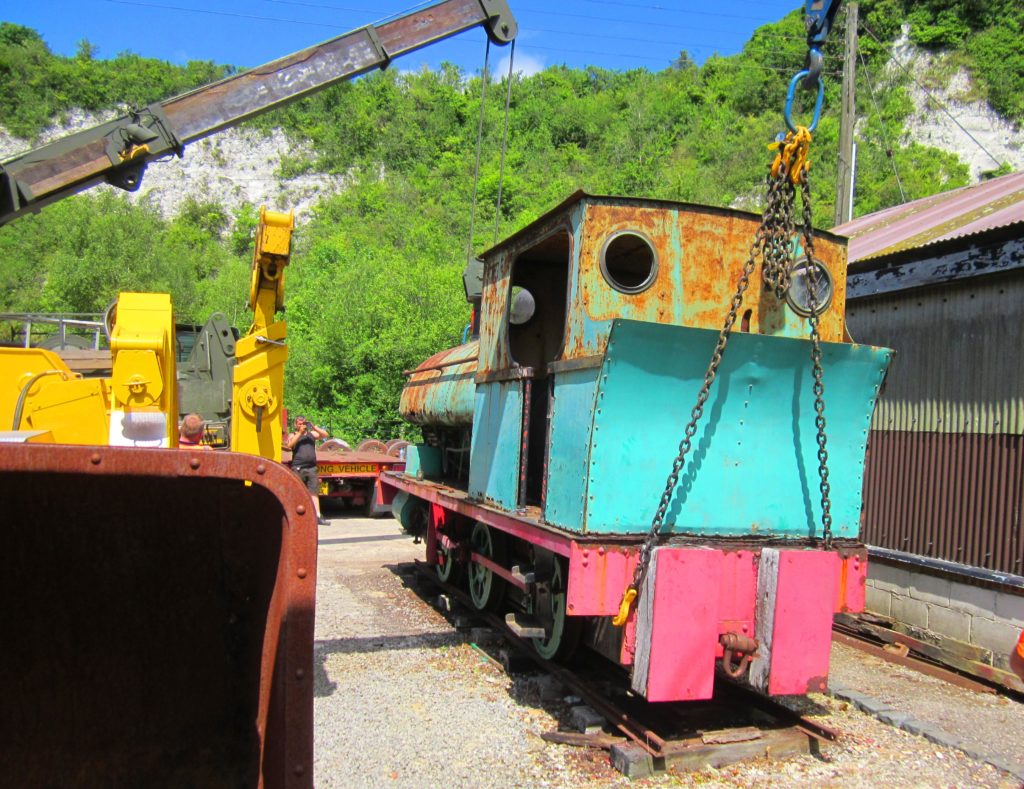
A substantial delay, caused by a road accident at Amberley’s entrance, allowed Stuart (armed with a very large hammer) to release the brakes, and to remove various fittings which the slipstream might have disappeared in transit.
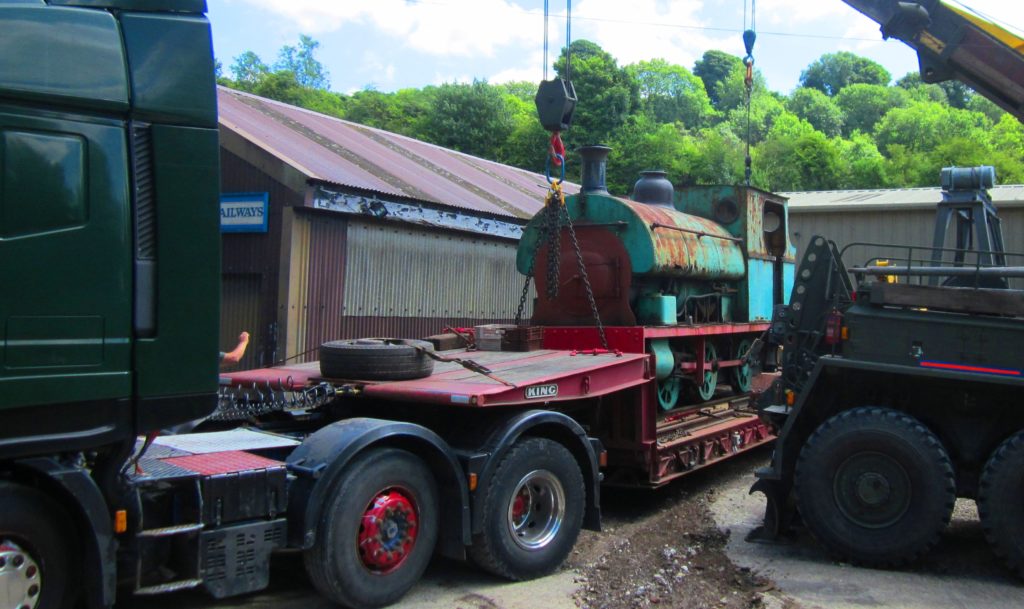
With the help of two large cranes, and a lot of tight manoeuvring,
the loco was lifted, the track removed from underneath, and the
low-loader backed underneath – easy to say – harder to do. Everyone at
Amberley was very helpful (even though we had to turn off the power in
the overheads for safety, meaning that other work onsite was disrupted) –
we’d particularly like to thank James S, who saw the whole process
through from the beginning.
After a fast run via the Dartford Tunnel (it’s not often you can say
that), Trust Chairman James, the loco, and Stuart all arrived at once in
Southwold. Unfortunately, the entrance gate was too small, so was
summarily removed. In the morning, during a certain amount of delay
caused by donated topsoil in the wrong place, local crane providers Wave
Trade lifted the Midland Railway van onto its bullhead track, at the
same time sneakily turning it so that the volunteers would be unable to
find the door. Stuart also took the time to oil and ease the loco’s
motion.
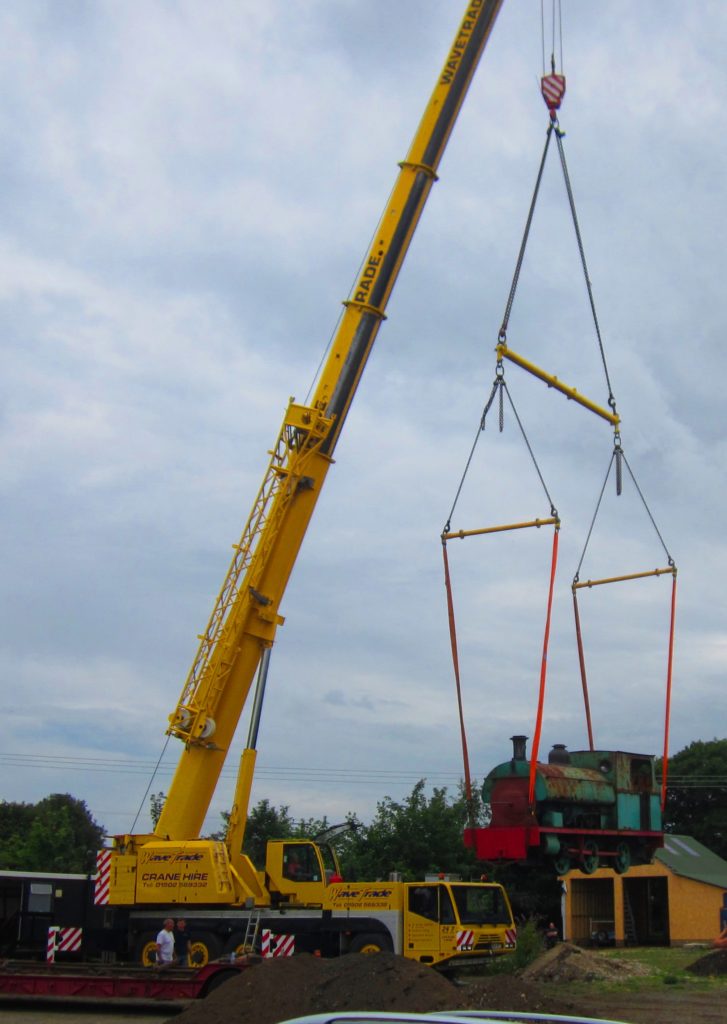
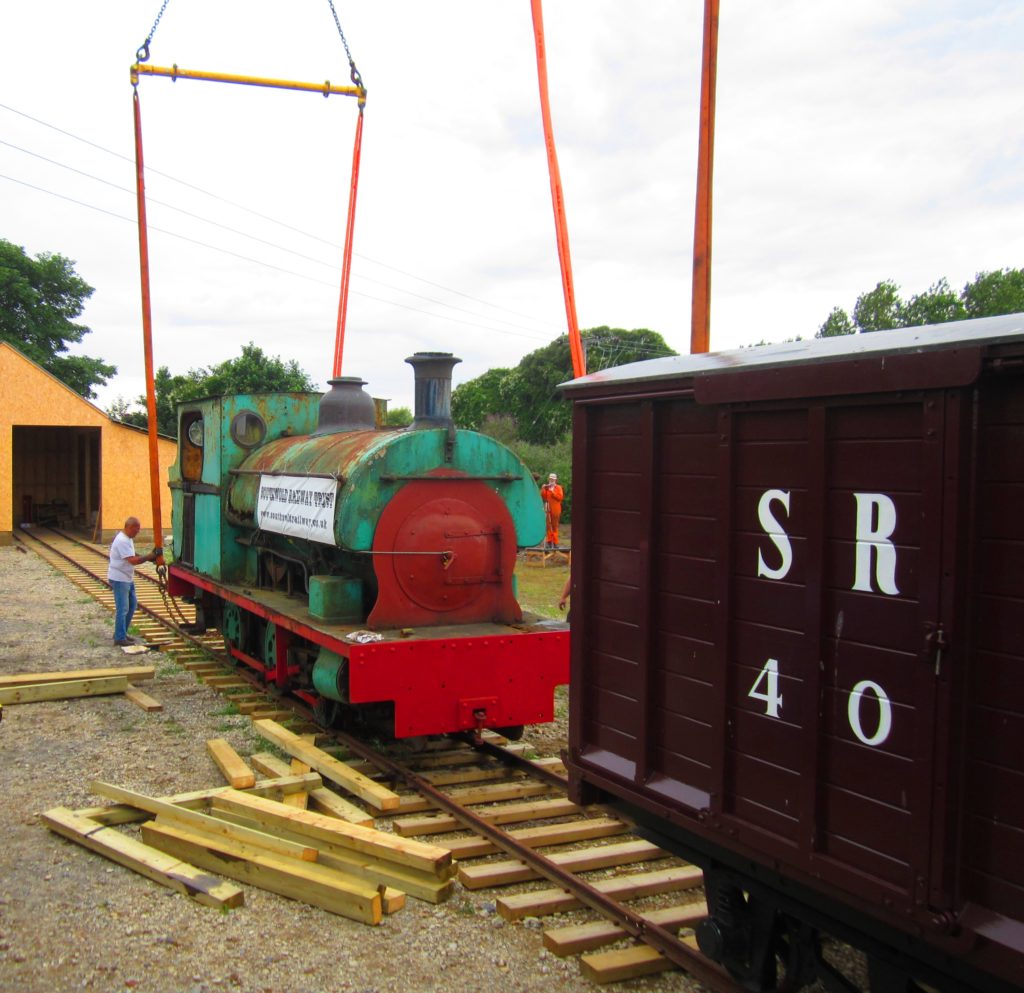
Then all was re-positioned, and the loco (which we now know weighs 18 tonnes) was swung around onto sleepers on our track. Then came the real miracle. Stuart lay underneath, and, armed with the largest adjustable spanner we had ever seen (and lots of oil), had a go at the inside motion. Much to our (though not his) astonishment, Scaldwell, removed from the sleepers and persuaded by a tele lifter, then happily rolled into the shed, with brakes off, and all motion doing its thing. It seems that, despite the rust holes above the footplate, all the working parts are in better condition than we thought.
Now the hard work starts. Stuart is in charge, and, having removed the valuable fittings (we have the nameplates in a VERY safe place!), will work to establish the condition of all parts, so we know what needs to be done. Whatever happens, lots of cash will be needed: well-wishers can join the group “Friends of Scaldwell” for a minimum of £10 per month on SO (contact us via this website), or just make a one-off donation, or join the Trust (if not already members) so you can work on the loco under Stuart’s management. There’s no reason, given the funds, why this historic loco cannot be steamed in a small number of years (the more cash, the smaller).
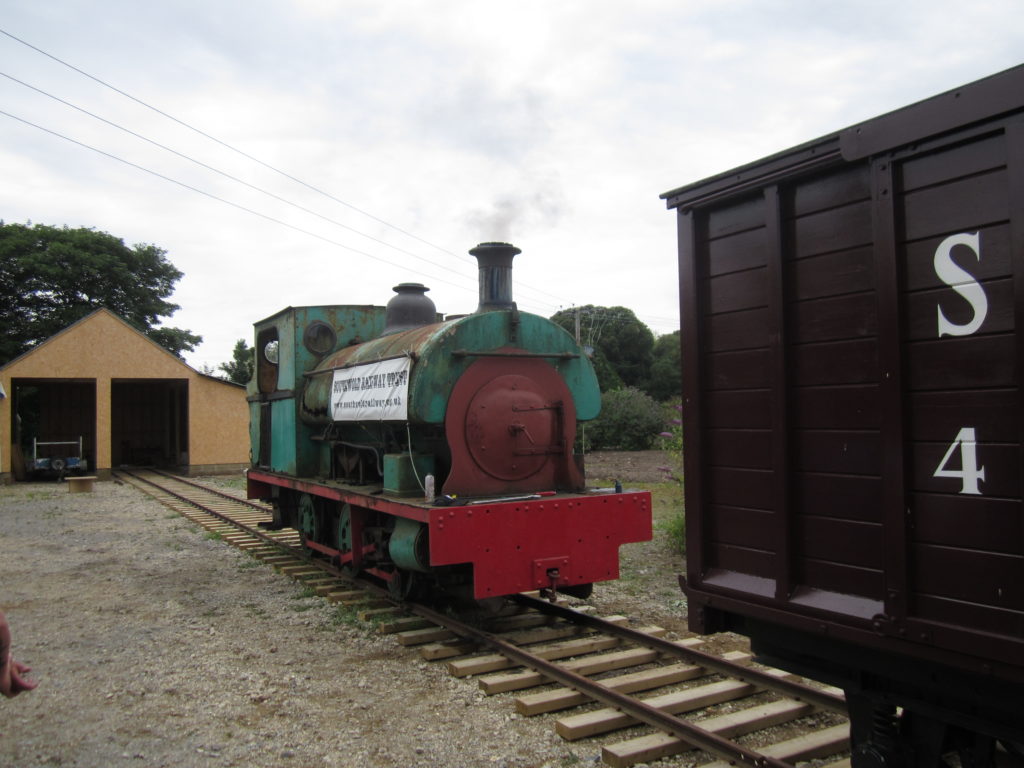
You can see the loco (but not climb onto it) on Saturdays and Sundays (and most Wednesdays) in August, at Blyth Road Southwold, between 10 and 4: park by the water tower (it’s free), and walk north over the common until you reach the SR trackbed – we are to the north of that, a few hundred yards from the station site.
